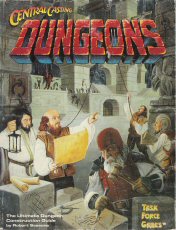
Central Casting: Dungeons (by Robert L. Sassone) is the best random dungeon generator I have ever seen. Its many features attempts to create a dungeon that really does allow a referee to sit back, roll dice, and come up with a keyed dungeon, and not just a map.
That's the real key to this one. When a room is called for, the room type is determined first, then features like size, additional entrances, and possible creatures and treasure are mentioned. With around 75 different room types, with many of those types having a variety of possible features, the dungeons really do practically build themselves.
Possible encounters and treasure are given in generic difficulty levels ("there is a 75% chance of an Encounter Level A in this room") so correlating that to dungeon level is a breeze. It is a generic supplement so it doesn't conform to D&D type formats for the treasure, but what I do is ignore its treasure recommendations (although I do listen to when it says an unguaded treasure should be there) and use the creatures' normal treasure instead.
The intriguing thing is its potential for expansion. It has three general dungeon "types" that it covers: Tombs, Fortresses, and "generic dungeon." Coming up with a new basic type (say, start with the assumption it's a natural cavern system) is easy. Just alter the original "What type of dungeon is it?" chart, and make a new 'possible rooms' chart to sit next to the "Dungeon/Tomb/Fortress" set... and that's it! Want to add a new room type (say, you saw that a couple of room types from here aren't in this product), it's easy. Write up the features of that sort of room, stick it in the back of this book, and alter the random room type tables to account for it. And that part's easy. Think too many bedrooms, or guardrooms, are showing up as per the standard CC:D tables? Shave a few points off of their possibilities for your new room!
Yeah, this thing is awesome. The only complaint I have is that certain tables are in constant use, so I just made a two-page "cheat sheet" of these tables so I never have to flip to them (they are spread over about 15 early pages in the book itself).
But yeah. Good stuff.

No comments:
Post a Comment